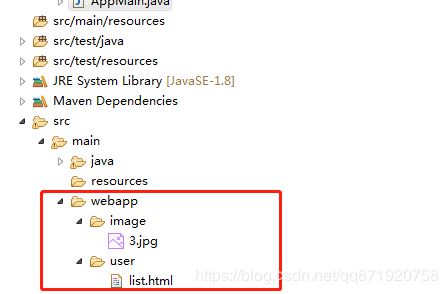整合servlet
1.继承HttpServlet
2.添加@WebServlet注解
@WebServlet(name="FirstServlet",urlPatterns="/firstServlet") public class FirstServlet extends HttpServlet{ @Override protected void doGet(HttpServletRequest req, HttpServletResponse resp) throws ServletException, IOException { System.out.println("doGet"); // 解决json中文乱码 resp.setContentType("text/json;charset=UTF-8"); resp.setCharacterEncoding("UTF-8"); PrintWriter out = resp.getWriter(); String str ="{\"name\":\"欧女士\",\"sex\":\"30岁啦\"}"; out.println(str); out.flush(); out.close(); } @Override protected void doPost(HttpServletRequest req, HttpServletResponse resp) throws ServletException, IOException { System.out.println("doPost"); } }
3.在启动类添加@ServletComponentScan
@SpringBootApplication @ServletComponentScan public class AppMain { public static void main(String[] args) { SpringApplication.run(AppMain.class, args); } }
浏览器访问
整合filter
1.实现Filter
2.添加注解 @WebFilter(filterName=“FirstFilter”,urlPatterns={".do",".jsp","/first"})
新建FirstFilter过滤器
@WebFilter(filterName="FirstFilter",urlPatterns={"*.xx","/firstFilter"}) public class FirstFilter implements Filter{ @Override public void destroy() { } @Override public void doFilter(ServletRequest arg0, ServletResponse arg1, FilterChain arg2) throws IOException, ServletException { System.out.println("==="+arg0.getParameter("sign")); /* if("no".equals(arg0.getParameter("sign"))){ return; }*/ arg2.doFilter(arg0, arg1); } @Override public void init(FilterConfig arg0) throws ServletException { } }
新建HelloController
@RestController public class HelloController { @GetMapping("/firstFilter") public String firstFilter(String sign){ System.out.println("---"+sign); return "firstFilter"; } }
3.启动类添加 @ServletComponentScan
浏览器访问
整合listener
1.实现 ServletContextListener
2.添加WebListenter注解
新建FirstListener 监听器
@WebListener public class FirstListener implements ServletContextListener{ @Override public void contextDestroyed(ServletContextEvent arg0) { } @Override public void contextInitialized(ServletContextEvent arg0) { System.out.println("---contextInitialized---"); } }
3.启动类添加 @ServletComponentScan
访问静态资源
访问静态资源springboot有两种方式
第一种
在/resources下建static文件夹,名字一定要命名为static。如图
新建list.html文件
"UTF-8">用户列表 用户列表界面
"图片" src="/image/3.jpg">
浏览器访问,如图
第二种
在src/main/webapp ,在main下建文件夹webapp,如图
文件上传
1.新建fileUpload.html
"UTF-8">文件上传
2.新建HelloController
@RestController public class HelloController { @RequestMapping("/helloFileUpdate") public Object helloFileUpdate(MultipartFile filename){ System.out.println("文件名称"+filename.getOriginalFilename()); Map<String,Object> retMap = new HashMap<String,Object>(); try { filename.transferTo(new File("D:\\upload\\"+filename.getOriginalFilename())); retMap.put("sign", "ok"); retMap.put("mes", "文件上传成功"); } catch (IllegalStateException | IOException e) { e.printStackTrace(); retMap.put("sign", "ok"); retMap.put("mes", "文件上传失败"); } return retMap; } }
3.配置上传文件大小等
编辑application.yml文件,添加如下配置
spring:
http:
multipart:
maxFileSize: 1MB
maxRequestSize: 5MB
注:maxFileSize表示单个上传文件的大小,maxRequestSize表示多个文件一共的大小
异步上传文件
很多时候我们是异步上传图片的,选择后就上传然后进行浏览
1.新建fileUploadAjax.html
"UTF-8">文件上传
注:("form").serialize()和newFormData(("form").serialize()和 new FormData(("form").serialize()和newFormData((‘#uploadForm‘)[0])都是序列化表单,实现表单的异步提交,但是二者有区别:首先,前者,只能序列化表单中的数据 ,比如文本框等input select等的数据,但是对于文件,比如文件上传,无法实现,那么这时候,FormData就上场了
2.新建HelloController
@RestController public class HelloController { @RequestMapping("/helloFileUpdate") public Object helloFileUpdate(MultipartFile filename,String remark,String title){ System.out.println("文件名称"+filename.getOriginalFilename()+" remark="+remark+" title="+title); Map<String,Object> retMap = new HashMap<String,Object>(); try { File file = new File("D:\\upload\\"+filename.getOriginalFilename()); filename.transferTo(file); retMap.put("sign", "ok"); retMap.put("filePath", file.getAbsolutePath()); retMap.put("mes", "文件上传成功"); } catch (IllegalStateException | IOException e) { e.printStackTrace(); retMap.put("sign", "ok"); retMap.put("mes", "文件上传失败"); } return retMap; } }
多文件上传
只要把接收参数 MultipartFile filename 修改为 MultipartFile[] filename 数组即可




